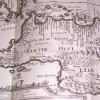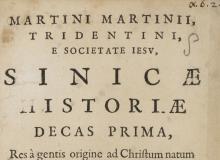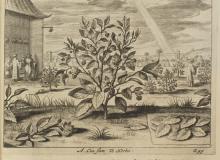Batavia




Batavia was a name used in Roman times for the land in northern Europe where the Batavi tribe lived, in modern Holland. During the height of Dutch colonial expansion, the name Batavia was given to some of its settlements overseas. The most famous of these was in East Asia in what is now modern Indonesia. In 1619 the soldiers and commanders of the Dutch East Inda Company (called the Vereenigde Oost-Indische Compagnie, or VOC for short) established a trade and administrative center in what is now modern Jakarta. In the decades leading up to this, Portugal was using Macau for a similar purpose, as well as trading at Nagasaki, and the British East India Company was likewise trying to establish a presence in the region.
The settlement of Batavia thus gave the VOC a strong foothold in the region, as they were able to connect with the maritime trade routes north into China and further to the east with Japan, as well as being a controlling entity in the rich trade routes through the nearby Spice Islands. At this time, spices like cloves, nutmeg, and mace (which also comes from nutmeg trees) were luxury items in Europe and made the people who controlled the trade exceptionally wealthy. Later in the seventeenth century there would be armed struggle between Portuguese, British and Dutch forces to be the dominant power in the region and thereby gain the monopoly over this trade.
Batavia was on the northern side of Java (near the mouth of a river) and faced towards Asia. Thus it was a strategic maritime port, and although for the Europeans tropical diseases like malaria (which was prevalent in Batavia) were highly dangerous to them, it was a busy location. This was one destination of European vessels traveling to and from Asia and the VOC exerted their governance forcefully. The Jesuit missionary Martino Martini spent time in prison here in 1653 when he was returning to Europe as procurator for the missions.
Related Items

The Italian Jesuit Martino Martini (1614-1661) was an historian and cartographer whose writings about China became influential throughout Europe. He was based in Hangzhou.

Jesuit missionaries were fascinated by the culture of tea drinking and described it in great detail, from its cultivation to its medicinal properties.

